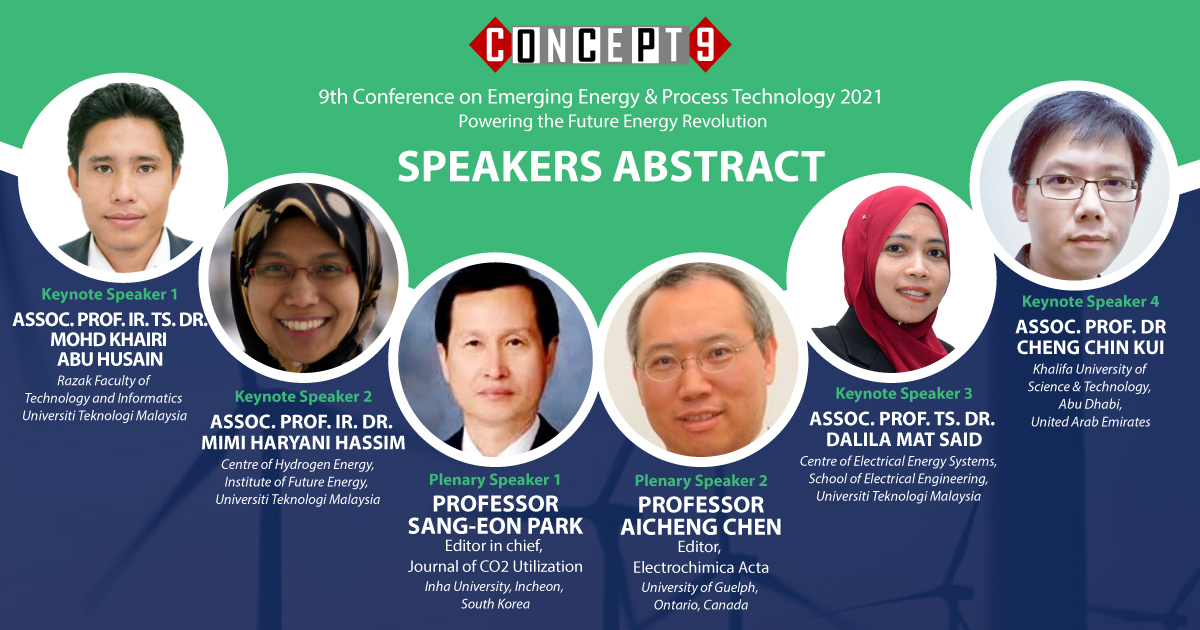
Catalytic CO2 Utilization: From Hydrogen Demander to Oxygen Supplier
Professor Sang-Eon Park
Inha Universitry, Incheon, Korea : separk@inha.ac.kr
Abstract – CO2 molecule is difficult to be activated due to its quadruple character which leads strong stability both thermodynamically and kinetically. When it comes to CO2 utilization, it’s better to transform into products in large quantity with reasonable value addition and long life time to be returned back to CO2. Mostly, hydrogen has been used as reductant for depriving oxygen to transform into fuels and chemicals. But, due to hydrogen economy, CO2 utilization would be viable only in the case of renewable energy used at this moment.
There would be another way of the use of saturated hydrocarbons as reductants to utilize CO2 as oxygen supplier instead of hydrogen demander for the hydrogenation into methane, methanol and hydrocarbons. Oxygen from CO2 could react with saturated hydrocarbons and C-H bond of hydrocarbons enable to produce olefins, aromatics and oxygenates, that are pivotal basic chemicals in the current chemical industry.
Here, CO2 uses as oxygen sources will be discussed for the production of basic chemicals such as ethylene, propylene, butenes, and styrene, aromatics via aromatization as well as oxygenates like acetic acid, phenol and etc.. The role of CO2 for dehydrogenating agent was coined as a soft oxidant in the oxidative dehydrogenation due to enhancement in both activity and selectivity in the conversions of saturated hydrocarbons into the corresponding hydrogen deficient basic chemicals.
Development of Nanomaterials and Nanocomposites for Hydrogen Production and Storage
Professor Aicheng Chen
University of Guelph, Ontario, Canada
Abstract – With rapidly intensifying environmental crises and the accelerated depletion of fossil fuels, there is an urgent need for the development of clean and sustainable energy technologies. Hydrogen production, storage, distribution, and utilization comprise the fundamental components of an envisaged hydrogen economy. Although these elements have been the focus of intense research for decades, the development of viable, safe, and efficient strategies for the storage of hydrogen remains as the most challenging. Nanostructured materials have garnered significant interest due their extensive surface areas and unique properties. Recently, my research team has designed and investigated a variety of novel functional nanomaterials. In this talk, the synthesis and surface characterization of advanced palladium-based nanomaterials and nanocomposites for hydrogen storage will be presented. The development of nanostructured electrocatalysts and photocatalysts for water splitting will be addressed. The significant roles of nanomaterials for hydrogen production and storage toward the development of an envisioned hydrogen economy will be highlighted.
Ocean Thermal Energy Conversion (OTEC) for Sustainability
Assoc. Prof. Ir. Ts. Dr.Mohd Khairi Abu Husain
UTM Ocean Thermal Energy Centre, Universiti Teknologi Malaysia
Abstract – Ocean Thermal Energy Conversion (OTEC) is a marine renewable energy system that converts solar radiation to energy. OTEC system uses the ocean’s natural thermal gradient; the ocean’s layers of water have different temperatures to drive a power-producing cycle. As long as the temperature between the warm surface water and the cold deep water differs by about 20°C, an OTEC system can produce a significant amount of power with minimal impact on the surrounding environment. The oceans are thus a vast renewable resource, with the potential to help us generate billions of watts of energy. The distinctive feature of OTEC energy systems is that the end products include energy in the form of electricity and several other synergistic products. Overall, OTEC is among the first 21 most impactful and emerging technologies and the only type, perhaps to date, that could easily fulfil all the 17 SDGs, hence should be fully utilised for the benefits of society, economy and the environment.
Safety and Health Assessment of Alternative Hydrogen Fuel Transportation Systems from Storage to the End-User
Assoc. Prof. Ir. Dr. Mimi Haryani Binti Hassim
Universiti Teknologi Malaysia
Abstract – In recent times, the transition of energy sources from conventional fossil fuels to renewable-based cleaner fuels has become a hot topic of interest all over the world. Although the heavy reliance on fossil fuel based energy is causing a series of adverse impacts to the world, the global demand for fossil fuels is still continuously increasing. As an alternative, a wide variety of non-fossil energy sources are slowly being introduced to meet the growing demand for fuel consumption.
Hydrogen is an ideal alternative fuel and energy carrier with near-zero or zero end-use emissions. It could be synthesized from renewable resources such as solar, wind and hydro energy. Another pushing factor on the uprising hydrogen technology revolves around its storage flexibility. Hydrogen itself complements electricity where it can be stored in bulk over a long time, and in various forms. Through different conversion technologies, hydrogen can either be stored as liquid, gas, as well as chemically or physically bonded to the carriers. Depending on the forms of storage, hydrogen could be transported and distributed via trucks or pipelines. Nevertheless, the lack of safety regulations on distribution infrastructures hinders many countries from further developing their hydrogen economy. Thus, a comprehensive understanding on the associated hazards and risks during hydrogen delivery is critically needed to develop a safe and reliable hydrogen distribution system. A detailed study focusing on the spatial deployment of hydrogen technologies, and a comprehensive assessment of hydrogen transportation systems through a modified safety hazards assessment method, are believed to provide a perfect complement solution towards the establishment of full hydrogen economy in a country.
Power Quality Challenges and Issues in Industrial Facilities
Assoc. Prof. Ts. Dr. Dalila Mat Said
Universiti Teknologi Malaysia
Abstract – Power quality issues are important with the increasing use of nonlinear loads and the usage of plant automation to facilitate the production process. Power quality consists of many disturbances such as voltage sags, swells, harmonics, flicker, unbalanced, etc. Power quality issues are usually invisible from the electricity bills, but their effects are almost noticeable. Manufacturing downtime, loss of production, product damage and equipment failure are all the consequences of power quality events which may cause significant financial impact on every industrial plant. Most of industrial facilities fail to notice the necessity of power quality monitoring until they face the problems. This is due to the cost of monitoring devices and the complexity of detection, analysis and solving power quality problems. Plant owners are responsible for protecting their own equipment from power quality issues. By comprehensive knowledge of power quality issues and taking actions before incidents happen, the cost can be reduced and the reliability of their production lines can be improved
Conversion of Palm Oil Clinker Waste into Mesoporous Silica for Ethanol Dehydration
Assoc. Prof. Dr Cheng Chin Kui
Khalifa University of Science and Technology, Abu Dhabi, United Arab Emirates
Abstract – Ethylene (C2H4) is one of the most important feed-stocks in the petrochemical industry. It is a primary precursor in plastic manufacturing, polyethylene production and even in surfactant synthesis (for example, ethylene glycol and ethylene oxide). The conventional ethylene production is via cracking or steam cracking of hydrocarbon. For sustainability reason, ethanol dehydration (C2H5OH → C2H4 + H2O) is touted as an alternative route. Acid-catalysed ethanol dehydration over sulphuric acid (H2SO4) or phosphoric acid (H3PO4) is typically employed. In the current work, the silica-rich palm oil clinker (POC) from oil palm agroindustry was valorised into mesoporous silica and acted as an agent to catalyse the dehydration of ethanol. Some interesting results will be presented, which confirm the dehydration activity of this class of material.

